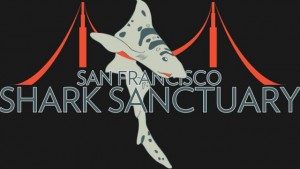 Yesterday I led another expedition out into the Gulf of the Farallones on the Outer Limits with Captain Jimmy. These wildlife tours transit the waters of the Gulf of the Farallones National Marine Sanctuary and visit the southeast Farallon Island, then continue on to the continental shelf where the coastal plane drops into the abyss of the deep sea. Primarily billed as whale watching, these trips are really about the entire ecosystem, and when I’m aboard, we talk shark, because sharks are what I love, study, advocate and protect through my non-profit Sea Stewards.
Yesterday I led another expedition out into the Gulf of the Farallones on the Outer Limits with Captain Jimmy. These wildlife tours transit the waters of the Gulf of the Farallones National Marine Sanctuary and visit the southeast Farallon Island, then continue on to the continental shelf where the coastal plane drops into the abyss of the deep sea. Primarily billed as whale watching, these trips are really about the entire ecosystem, and when I’m aboard, we talk shark, because sharks are what I love, study, advocate and protect through my non-profit Sea Stewards.
I’m always amazed at how many San Franciscans are aboard and who have never been on the waters of the Sanctuary, much less out to the islands. The trips start with some trepidation about the weather, the wind and waves and the 27-mile transit to the islands. The nervousness fades as we immediately see several small harbor porpoises before we even cross beneath the Golden Gate. There are more of these shy cetaceans than I have ever seen, and local researcher Bill Keener of Golden Gate Cetacean Research confirms that the small dolphins have returned to the San Francisco Bay after an absence of approximately 65 years. Their recent foraging in the bay may be an indicator of the health of the ecosystem.
Clearing Point Bonita, we enter the shipping channel and begin our search for whales, but it is the pelagic seabirds that first greet us. We are currently experiencing a changing of the guard in the transition between seasons. The productive ecosystem off the coast of California has three oceanographic seasons: upwelling season in the spring and early summer; relaxation in the late summer and fall; the storm season in winter.
During the upwelling season (March-July), strong northwest winds and the south flowing California current combine with the earth's rotation to drive surface waters away from the shore. These surface waters are replaced by an upwelling of nutrient-rich deeper water from offshore. The nutrients become available for surface dwelling phytoplankton (microscopic marine algae). Phytoplankton form the foundation of this oceanic food web and the combination of nutrients and increased sunlight in spring initiates a bloom of life that radiates up the food web from small shrimp called krill to the great whales. An abundance of phytoplankton, zooplankton, and young fish are food for animals at higher levels of the marine food web. During the summer months endangered blue, humpback and other species of whales visit our National Marine Sanctuaries of Monterey, the Gulf of the Farallones and the Cordell Bank to feed on this abundance of krill. Here's a video from a summer trip.
